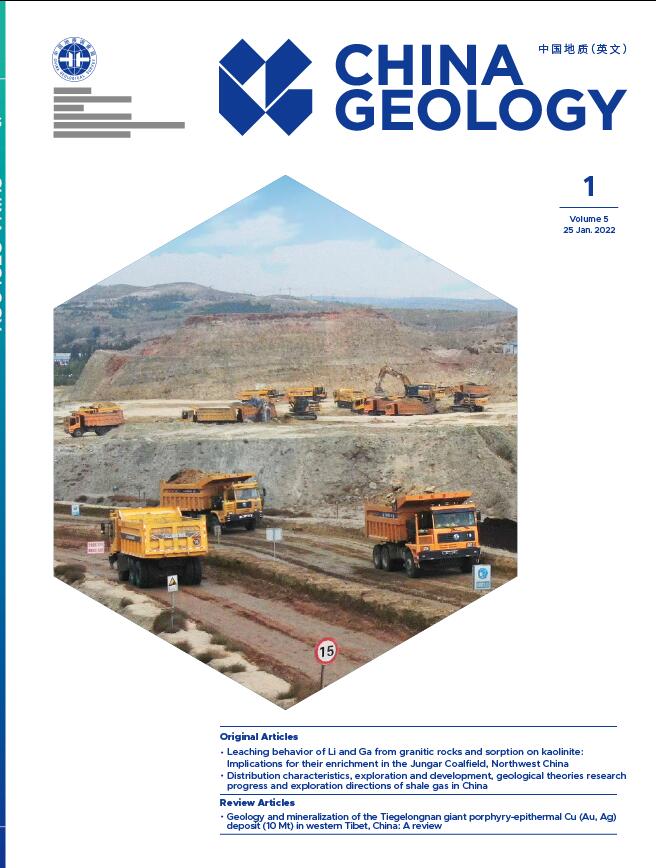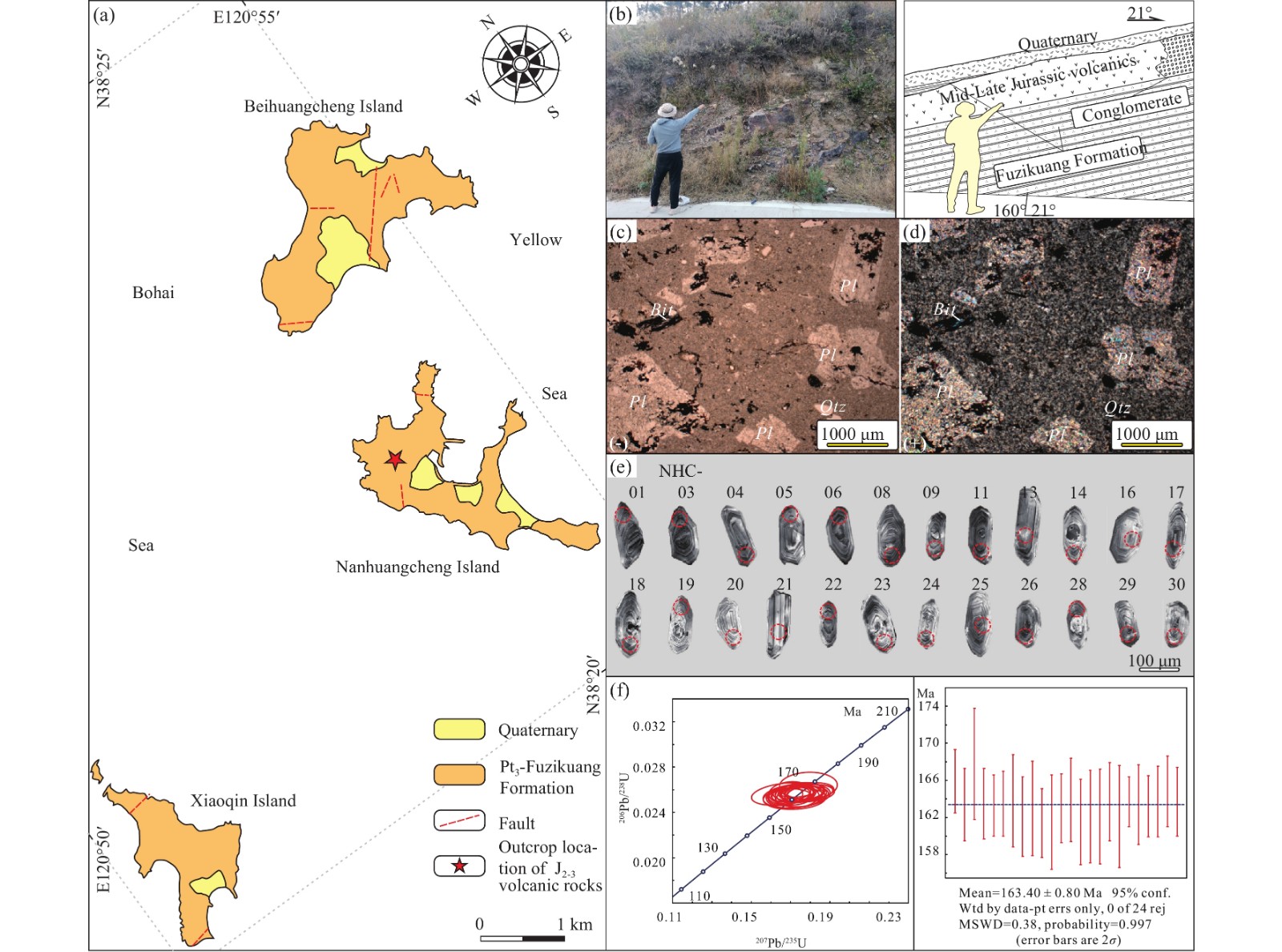| Citation: | Xiao-qing Zhu, Ming-jian Wang, Xi Mei, Zhi-xian Tian, Shi-pu Bi, Long Huang, 2022. Discovery of the Mid‒Late Jurassic volcanic rocks (163.4 Ma) in Nanhuangcheng Island, Shandong Province, China, China Geology, 5, 191-192. doi: 10.31035/cg2021028 |
Discovery of the Mid‒Late Jurassic volcanic rocks (163.4 Ma) in Nanhuangcheng Island, Shandong Province, China
-

-
References
Ludwig K. 2011. Isoplot v. 4.15: A Geochronological Toolkit for Microsoft Excel. Berkeley Geochronology Center Special Publication, 4, 75. Qiao EW, Peng H, Ma XM. 2019. The Surrounding rock condition exploration and construction method analysis of cross-Bohai strait passage. Journal of Geomechanics, 25(4), 563–573 (in Chinese with English abstract). doi: 10. 12090/j.issn.1006-6616. 2019.25.04.055. Paton C, Woodhead JD, Hellstrom JC, Hergt JM, Greig A, Maas R. 2010. Improved laser ablation U-Pb zircon geochronology through robust downhole fractionation correction. Geochemistry Geophysics Geosystems, 11, Q0AA06. doi: 10.1029/2009GC002618. -
Access History

-
Figure 1.
a‒Simplified geological map of the study area; b‒field photo and the sketch of J2-3 volcanic rocks in Nanhuangcheng Island; c, d‒photomicrographs of volcanic rocks in Nanhuangcheng Island, Qtz‒quartz, Pl‒plagioclase, Bit‒biotite; e‒CL images; f‒zircon U-Pb age Concordia diagram and weighted average age diagram.





 DownLoad:
DownLoad: